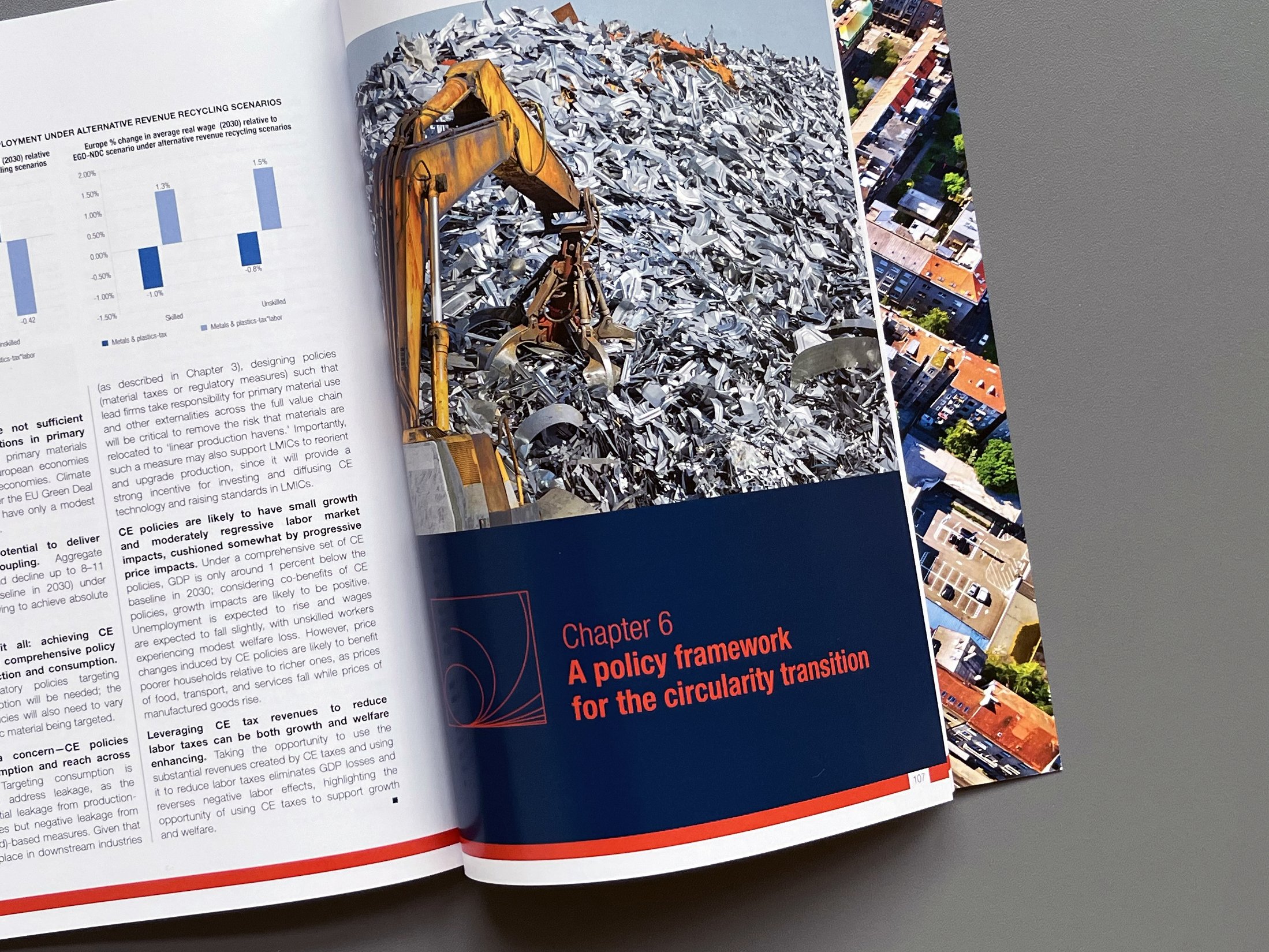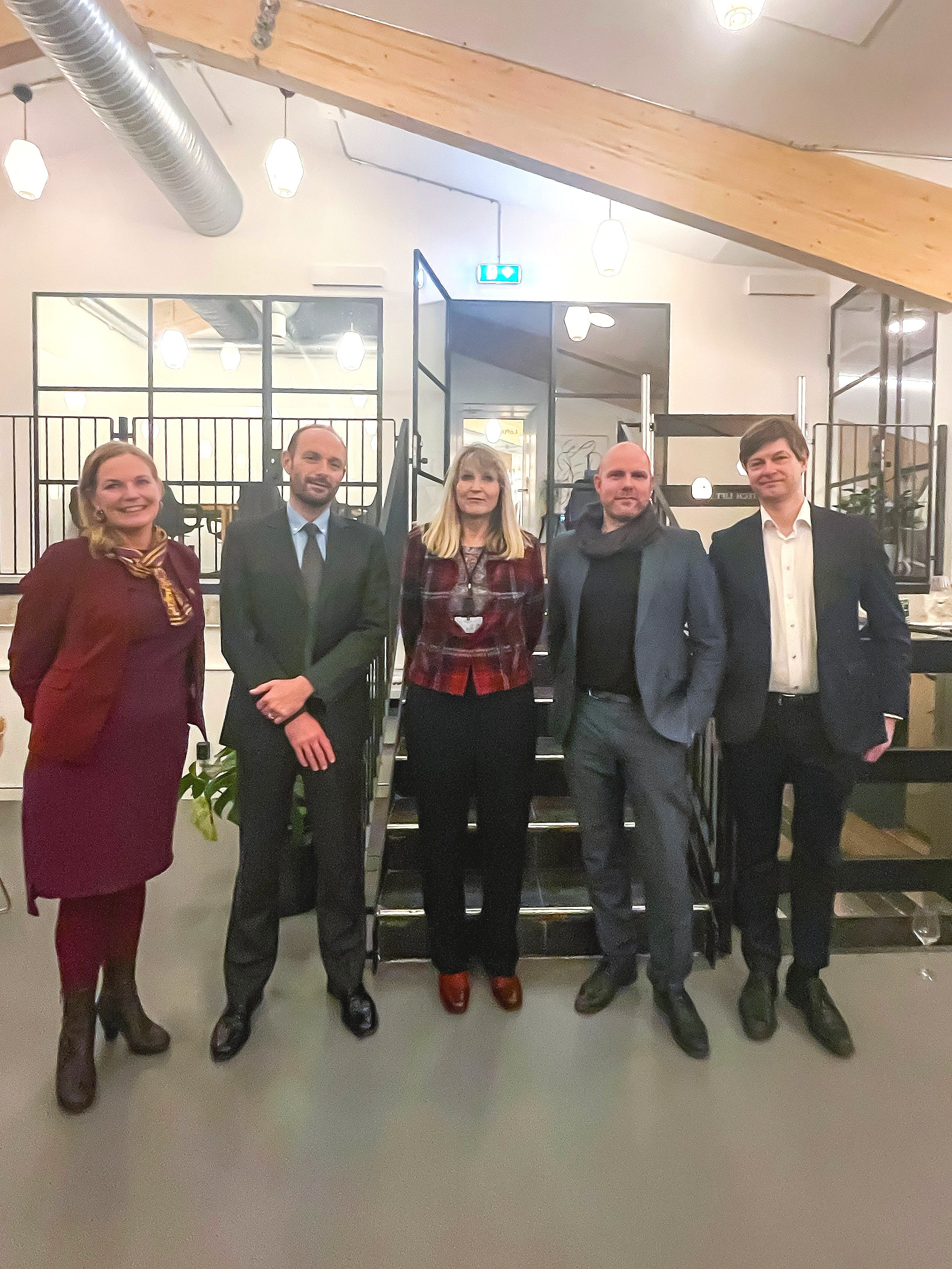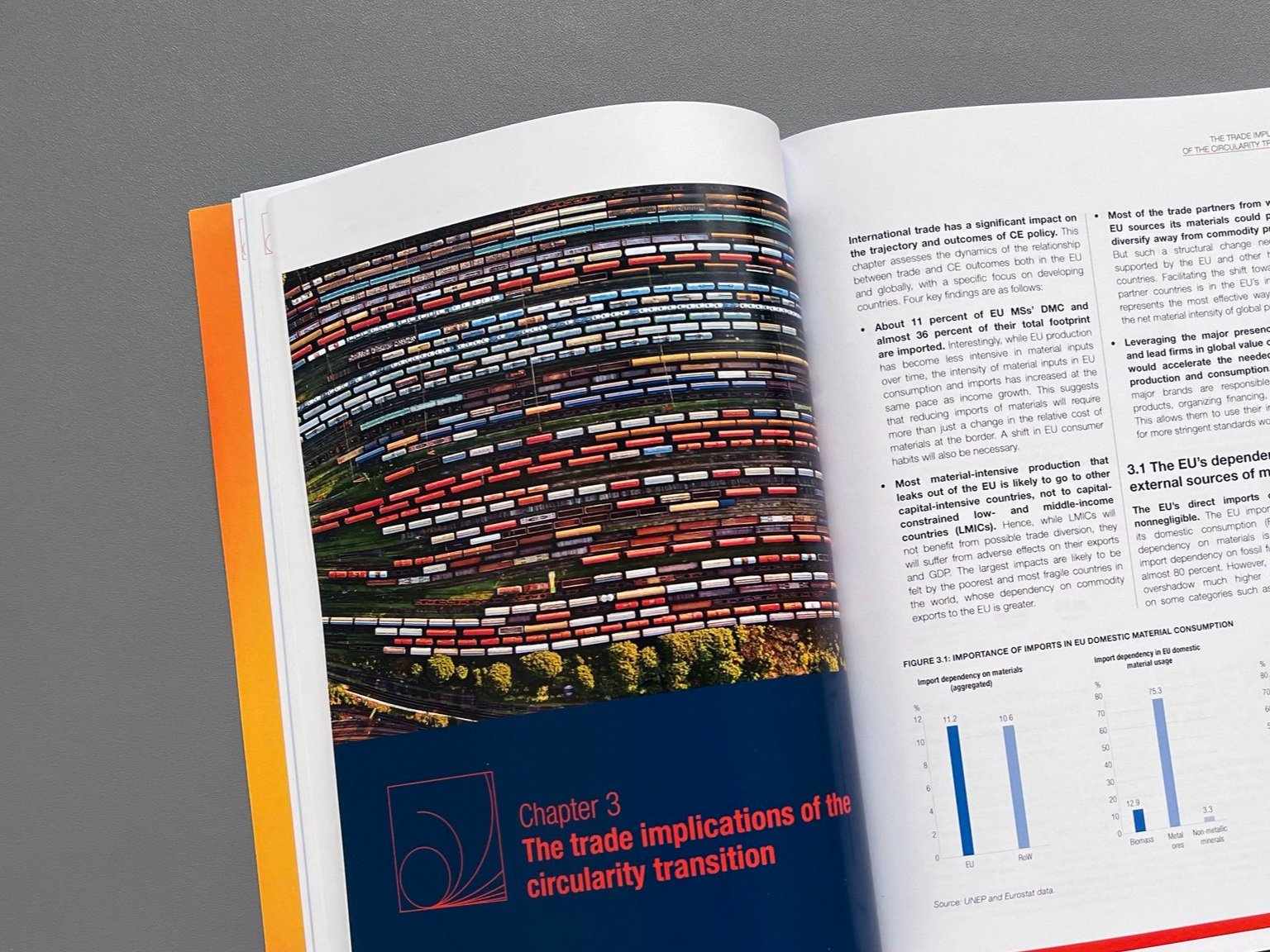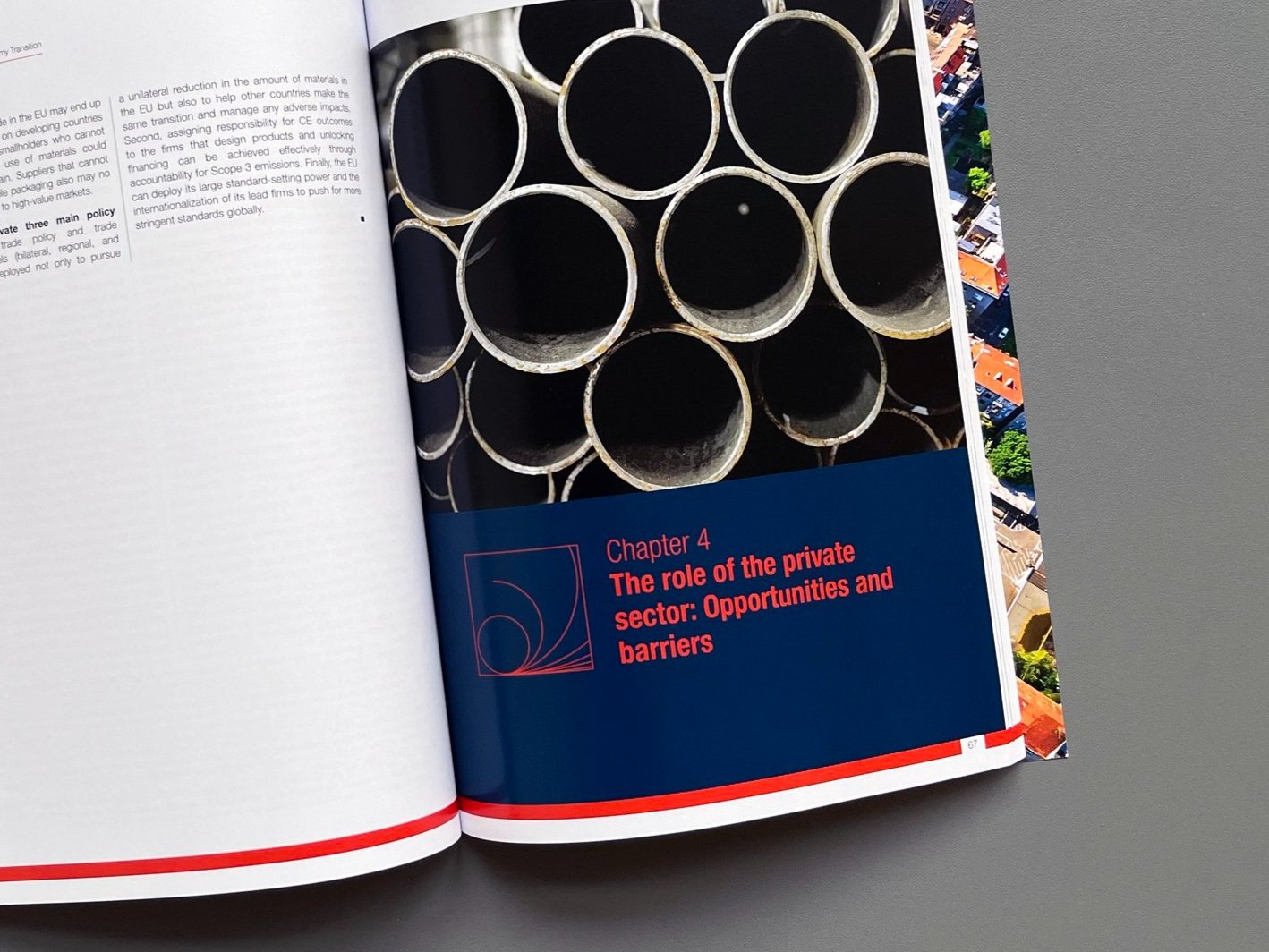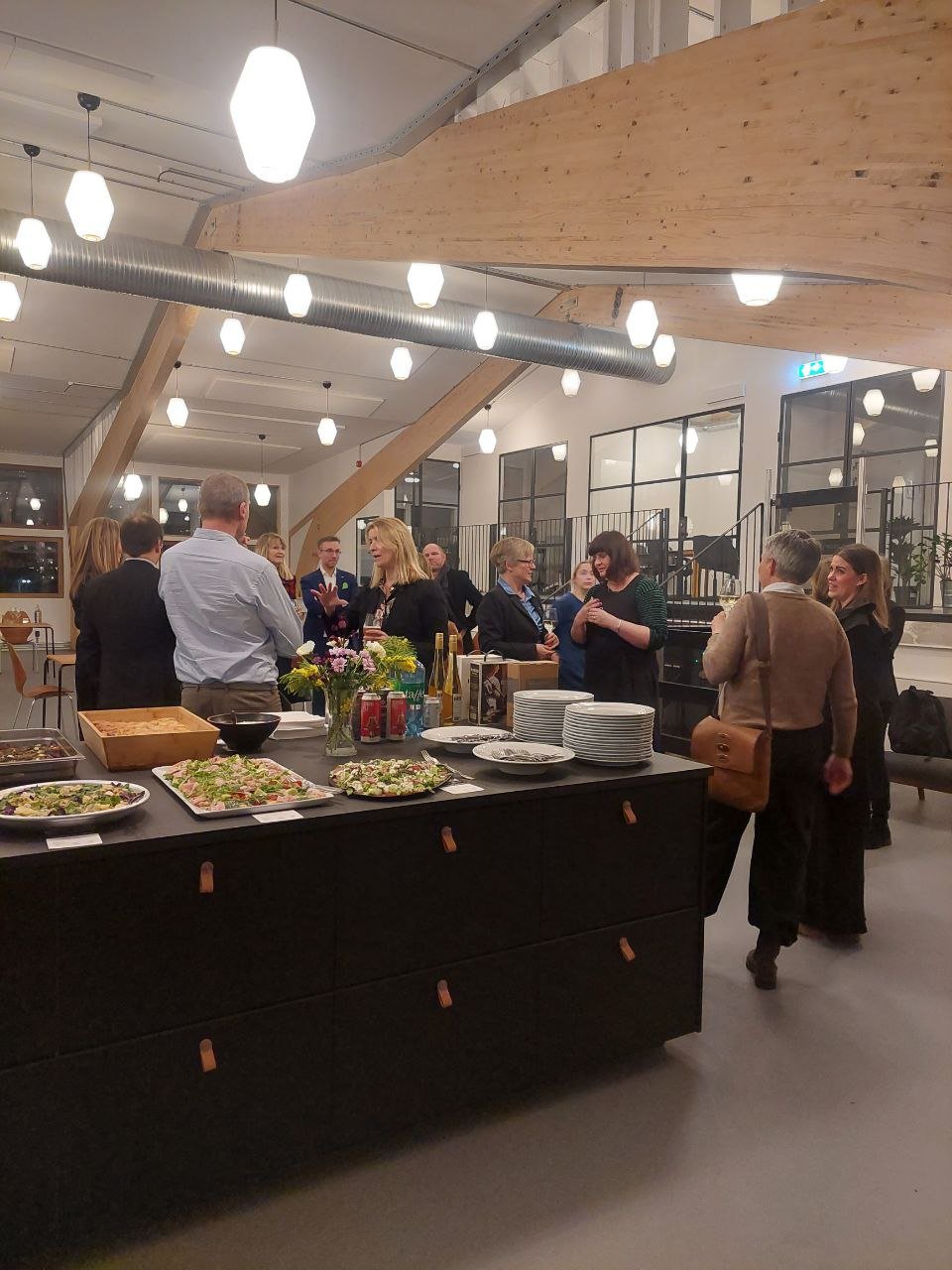From product design to policy design: the Circular Economy Transition will require supportive reforms
‘Squaring the Circle: Policies from Europe’s Circular Economy Transition’ is the World Bank’s first comprehensive report on the topic of the circular transition and decoupling growth from material consumption. The report takes a strong stance on the importance of having a far-reaching suite of circular economy policies to accelerate the transition.
We were very glad to recently host the report’s lead author and a Lead Specialist at the World Bank, Andrea Liverani, together with representatives from Norway’s public and private sectors working with sustainability and the circular economy. Natural State’s Head of Circular Economy, Cathrine Barth, had a chance to sit down with Andrea and ask him a few questions about the circular transition in Norway and globally and what role the World Bank can play.
“The policies that support our economies and today we take for granted have been developed with linearity in mind. But many of these linear policies present critical barriers to the emergence of circularity.”
Circularity and the World Bank’s agenda
‘Squaring the Circle’ is a recent World Bank report that, as Andrea points out, highlights the relevance of the CE agenda for the institution. For him, the circular economy presents a framework allowing for continued welfare and value creation while consuming fewer resources. In fact, given the environmental pressures that linearity has already generated, in many ways, it is the only framework promising an alternative to the only other option — i.e., cutting the level of consumption which we today take for granted.
However, decoupling growth from material use is tough. The EU economy has made progress towards this goal, and the important regulatory agenda recently put forward by the European Commission will certainly lead to further achievements. But as Andrea puts it, the circular economy is a ‘super wicked problem’, requiring coordinated action amongst actors who often do not have or face the same incentives. The report identifies several internal and external barriers which firms face in embarking on Circular Business Models (CBMs) — including access to finance, as well as coordination within and across sectors and value chains.
How can we break the ‘brick wall of linearity’?
What does it take to truly disrupt traditionally linear economic systems and enable the transition to a circular economy? Here, we hear more from Andrea and Cathrine on the opportunities and barriers of the circular economy, what the World Bank is working on regarding circularity and what the aims of this report are.
Cathrine: What have been your reflections when you met the community today?
Andrea: What strikes me is the level of energy which a group like this brings out, and the variety of backgrounds, experiences, and outlooks that you see in a meeting of circular economy stakeholders. You have people coming from different pathways and working in different sectors but essentially sharing the same inspiration to make an impact. They get what circular economy is, its promise, as well as its urgency.
A second consideration is the clear sense that the business sector is the true engine of the transition. But its impact, particularly for SMEs, remains constrained by a brick wall of linearity. One of the colleagues speaking tonight mentioned the importance of combining bottom-up action — action from advocates, consumers, and representatives of the enterprises and organizations in this group tonight — with real policy action from governments. Our report really focuses on this side of the story, partly because the World Bank works with governments in low- and middle-income countries all over the world, and much of our work revolves around policy reform. In the short term, outfits like the Nordic Circular Hotspot, Natural State or other entities working in this space will be paying increased attention to the fact that without policy change — not only in relation to taxes and subsidies but across the policy spectrum including, importantly, trade — closing material loops will remain tough.
What is the World Bank's role in the CE transition?
How do you see the role of the World Bank when you have discussions and meetings on the Circular Economy in the districts of the world like, for example, the Norwegian and Oslo communities? How do you see this national–world alignment on CE?
The World Bank is a financing and knowledge development organization. We mostly finance investments in low- and middle-income countries but, in a way, we also support and finance investments in Global Public Goods. Take climate change for instance — as the largest provider of multilateral finance targeting climate, we finance decarbonization investments in specific countries. But in doing so, we contribute to supporting the global decarbonization transition. The CE transition is at a more incipient stage, and our main role at the moment is less about financing than helping governments in setting up supportive institutional and policy frameworks. We have been working with countries, like Turkey, advising on circular economy strategies and have recently helped Croatia set up an action plan for the construction sector. And in this, the Bank is only as strong as the countries it works with and learns from. Facilitating conversations between countries that are at the cutting edge of thinking about the transition — such as countries in Europe like Norway, certainly Sweden, the Nordics in general, and the Netherlands — and countries which have just started thinking about the need to embark on the transition is crucial in this respect to share knowledge and innovations.
Policies have been developed with linearity in mind
You are pretty blunt when you address how the world is locked in a linear economy, how it is subsidised and the challenge of breaking out and becoming circular. You also addressed the material footprint of every single Norwegian, 40 tonnes per capita compared to an average of 13 tonnes worldwide. So, what do you expect from a society like Norway or the Norwegian business and policy community when we are aware of the reality? What do you hope for?
What we hope is that the global and local conversation on the Circular Economy veers from being centred on the redesign of products and the redesign of business models to a redesign of policies. What our report tries to put forward is that current policies — for instance, trade and fiscal policies — have been developed to support the linear economy and, as such, they are a barrier to the emergence of circularity. So, VAT systems that keep taxing the materials as they are looped back into the system, landfilling taxes that do not price the real cost of the waste including its environmental severities, and subsidy schemes that mask the real costs of raw materials extraction are what needs to be redesigned. Otherwise, the emergence of the circular economy is going to remain an outgrowth of the linear economy, rather than its disruptor.
Call for new ideas and experiences
And finally, you have heard a lot of stories tonight and need to head back tomorrow, but is there anything or anyone from the Norwegian community that you would be keen to learn more about when you are invited back next time?
Again, as a knowledge institution, we are only as strong as the experiences and ideas to which we are exposed. We are extremely happy to have the opportunity to present our report to multiple constituencies and in different countries. But the true opportunity is to hear the views and experiences of groups like the one present here tonight, as well as those of policymakers who are seriously thinking about how to move the CE agenda forward. So anytime an advocacy group, a corporation, or a government actor has a new idea about how to move this agenda forward, we’d love to hear from them.
The report, ‘Squaring the Circle: Policies from Europe’s Circular Economy Transition’ provides a comprehensive look at barriers and enablers for the circular economy transition based on the EU’s experiences. The report shows that it is possible to decouple growth from material consumption through a far-reaching suite of policies aimed at creating the incentives to ensure adequate pricing of natural resources; providing information allowing economic actors to take better decisions; enabling institutions to mainstream circularity as a whole-of-government agenda; and unlocking investments to support uptake among producers and consumers.
Natural State, 27 February 2023, Oslo



